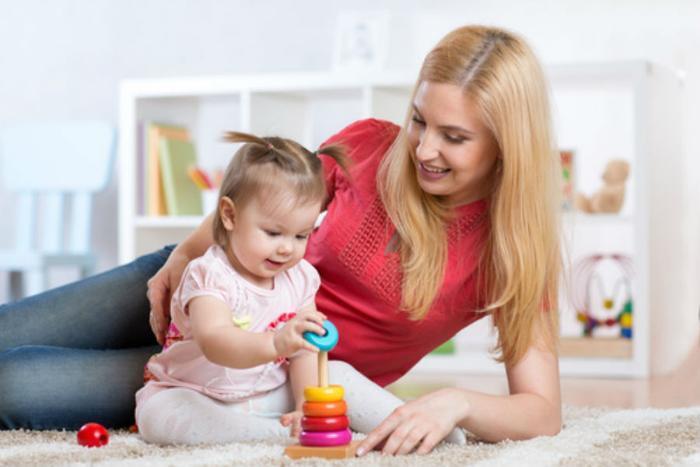Image from Consumeraffairs.com
Let’s face it, raising and caring for kids can be complicated! How much screen time should they have? What foods should they eat? What is a balanced schedule? The decisions can be difficult, and keeping up with them physically can be really challenging. Here are some tips to avoid pain or keep it at bay for those that work with young children.
1) Sit on the floor with them. Kids love to play on the floor. As caregivers we find a lot of creative ways to get closer to their level and a lot of them aren’t great for our own bodies. Go ahead and sit on the floor with them! Try to sit somewhere with a back support (wall, piece of furniture, etc.) and sit with either your knees bent up or with your legs out in front of you. Try to be sure that your midback (from the bottom of your shoulder blades or a woman’s bra-line) and below is on the wall. Lean your upper back and shoulders away from the wall slightly by using your abdominals to pull your lower ribs down. If you’re sitting with your knees bent, your shoulders will likely already be pulled away from the wall. Be sure you can feel your sitbones well on both sides.
- Try to avoid sitting cross-legged as this places your hips in an exaggerated amount of rotation for a prolonged period of time and places stress on your sacroiliac (SI) joints.
- You can also try “mermaid sitting” for short periods of time if it’s comfortable to you. This is essentially side sitting on the floor with both of your feet over toward your left hip. This will mimic proper hip rotational positions and left trunk sidebending that we try to accentuate in Postural Restoration (PRI) programs. Just be careful to NOT do it the other direction (like the woman in the picture above)!
2) Make use of your left side. As a part of our natural bias that often gets over-exaggerated over time and for people with pain, we tend to utilize the right side of our body a lot more, particularly with reaching, standing, and bending our trunks to the right. Simply try to reach more with your left hand as you’re preparing their meal, passing them a toy, or tidying up while they’re napping or playing by themselves.
- You can also promote left trunk sidebending by sitting on their right-hand side. Now whether you’re sitting next to them at a chair or on the floor, reading them a book or helping them eat their meal, you will constantly be practicing bending your trunk toward the left. This is essential for progression in your PRI program!
3) Hold/carry them on your right hip. This relates to tip number 2. We tend to place our kiddos on our left hip so that we can manipulate objects with our right arm. By simply placing them on our right hip, our left hand is free to be used more throughout the day. Additionally, the excess weight on your right side will force you to use your abs and bend your trunk to the left in order to counterbalance the weight. This is such a simple trick that can help in so many ways!
4) Use that stroller to your advantage. When taking your kid(s) on a walk, the added weight of the stroller can really help train your abs. When walking, especially when you’re going uphill, think about pressing/reaching your arms forward on the stroller handlebar as your lower ribs move backward and down toward your lower spine. This will help to engage your abs and properly align your spine as well as gain some strength and endurance in those postural abdominal muscles!
- When going uphill, be sure to keep your tailbone tucked under (or avoid arching your back) and pushing through your heel behind you as long as you can before letting your body weight move onto the ball of your foot.
5) Relax. This is something most caregivers understand to be important as we cannot properly care for our kiddos if we are in need. Relaxation is also very important from a PRI perspective. Life in general, especially a life filled with young ones, can be very stressful. It’s easy for our bodies to live in fight-or-flight mode and it can be difficult to get out of it. This disallows the muscles associated with heightened fight-or-flight levels from fully turning off and can lead to muscular imbalances and poor joint positions in our body. Simply relaxing in some way (meditating, diaphragmatic breathing, reading, going to bed a little earlier, etc.) will help to stay in touch with our rest-and-digest systems and remain more balanced emotionally and physically.
Written by Lesley Callaham, MPT, PRC September 6, 2018

